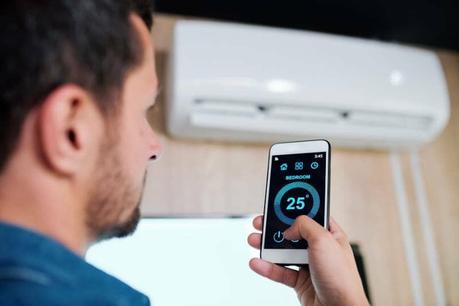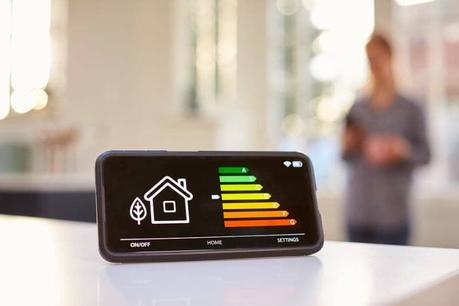We discussed a similar question only the other week, with our article “Can smart heating systems cut your heating costs?” – but we’re always open to other interpretations…
Rising energy prices can put a significant strain on family finances, which is why many homeowners and landlords are turning to smart home energy solutions to save money on their utilities.
Electricity saving devices for homes like a smart thermostat and other energy-saving smart gadgets can significantly reduce monthly utility costs. But how exactly can they do this?
Due to the current energy crisis, we teamed up with an estate agents in Leeds – Dwell Leeds, to help homeowners, tenants and landlords gain a better understanding of SMART energy devices and how exactly to use them.
So, let’s dive into how SMART devices can lower your energy costs and what best practices you should be taking!

How can smart technology help save money and conserve energy?
The rising popularity of smart devices is a testament to their convenience, efficiency, and low cost.
Using the internet, the devices in a “smart home” can communicate with one another, allowing the homeowners to remotely manage their home’s lighting, heating, temperature, entertainment system, lighting, and security systems. As well as the devices automatically modifying power use in response to changing conditions in
Here are six ways to manage your smart home and how the technology functions to cut costs on utilities.
Switch to energy-efficient smart LED bulbs
Smart LED lights provide energy-efficient hardware and automated capabilities that save energy, giving you the best of both worlds.
In addition, they are more efficient and flexible than standard light bulbs. The term “smart bulbs” refers to light bulbs that can be controlled via an app on your smartphone.
You can configure smart lights to turn on and off at specific times to save energy, similar to how you would program a smart thermostat.
Once they are connected to your smartphone through the WiFi, you can manage all aspects of the lighting such as brightness, motion detection, color, and timer settings. In addition, smart lights can be controlled from anywhere in the world, even when you are on vacation. Not to mention the ability to shut down your kids house party, with Jedi skills.
Install A Smart Thermostat

Smart thermostats and sensors that monitor temperature changes can instantly regulate the heating or cooling in your home. In addition, the temperature in your home can be adjusted from your mobile device, whether you’re at home or away.
The days of wasting money and energy by keeping the heating on in an empty house are over. Thanks to its programmable features, you have complete control over the thermostat, enabling you to switch it on and off whenever possible.
For example, you can tap the app if you forgot to turn off the heat before leaving the house or if you’re running late getting home. Likewise, you can have your home ready when you return by adjusting the thermostat minutes before you arrive.
Use a Smart Plug
Energy is wasted when you forget to turn off your appliances or leave them in “standby” mode. Most home appliances can be safely shut off at the wall outlet without affecting their settings. Smart plugs are a practical alternative if you don’t have the funds to build a complete smart home system.
A smart plug can be helpful for this purpose, as it can be used to turn off the standby mode of many appliances simultaneously. Turning off standby mode on your devices can save you about £55 per year in electricity costs.
Smart plugs can be installed in electronics such as televisions, computers, and other home appliances. However, it is essential to read the manual as other appliances, such as refrigerators, satellite receivers, wifi modems, and other gadgets, require regular plugging in.

Using a smart meter can help you cut costs
Knowing your energy use in real-time and with accuracy is crucial. It’s essential to get a general idea of your monthly energy consumption and a daily breakdown. A smart meter provides real-time information on energy consumption and associated costs.
A smart meter will make it simple for you to monitor your energy consumption and identify areas in which you may save energy costs and lower your carbon footprint. It can help you modify your energy usage and decrease your monthly expenses. For example, you can do the laundry during off-peak hours or take shorter showers to conserve hot water and electricity.
Your meter can be upgraded at no additional cost. In addition, installing smart meters empowers you to manage your energy expenses by providing you with accurate readings of your energy consumption, enabling you to pay lower utility rates, and providing you with a more in-depth breakdown of your energy use on your monthly bills.
Replace Outdated Appliances with Smart Appliances
Intelligent features are being added to more home appliances. Now we have entertainment systems, washing machines, televisions, refrigerators, and coffee makers that can communicate with you using apps. For example, a phone alert is sent if the fridge door is left open.
ENERGY STAR certified appliances utilize less energy and include new functionalities that potentially enable “smart grid” capabilities. So, If your smart washing machine requires service, it can notify you via email. Pretty cool, right?
Try Using Smart Windows
When building or remodeling a house, it’s crucial to consider installing more energy-efficient windows. Conventional windows let in the cold and waste energy. Heat gain and heat loss through windows account for 20-30 percent of household energy consumption.
Fortunately, smart windows can reduce heating and cooling costs. Keep an eye out for the NFRC and ENERGY STAR labels. These low-energy windows automatically adjust their tint based on ambient temperature and light. Using this programmable window, you may control how much light enters or leaves a building.
Are Smart Appliances Energy Efficient?
Smart home technology makes it simpler to turn on your appliances remotely, turn your lights on or off at certain times or open your garage door automatically. Using them properly can also help you save money and energy. Appliances that have earned the ENERGY STAR label save money and energy because they use less power.
How Much Money Do Smart Homes Save?
Thermostats and other smart home equipment save a ton of money on utility bills every month because they can instantly respond to the ever-changing energy demands of the home. They can also identify inefficiencies to prevent unnecessary energy and gas consumption. For example, by adopting a smart thermostat, the average home can save its heating expenses by 10-12 percent and cooling expenditures by 15 percent, according to a study conducted by Nest Labs.
How Do Smart Power Strips Save Energy?
Smart power strips, like light occupancy sensors, can tell when you’ve left a room and automatically shut down all your electronics, including the cable box and video gaming consoles, to conserve energy. According to the National Renewable Energy Laboratory in the USA, using these smart strips can save you around $200 a year in energy costs which is roughly £174 for our UK audience.

